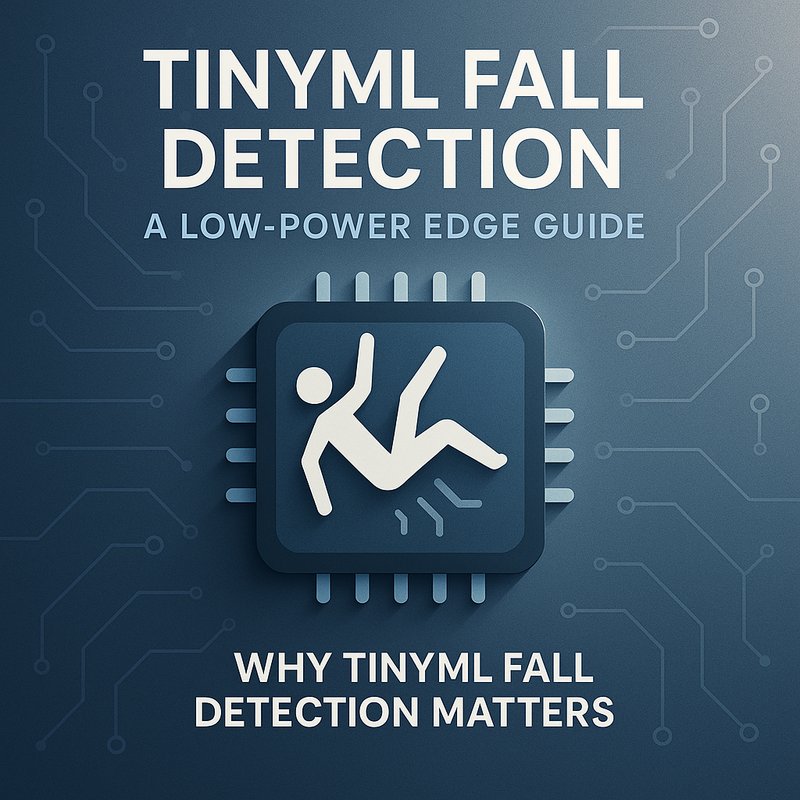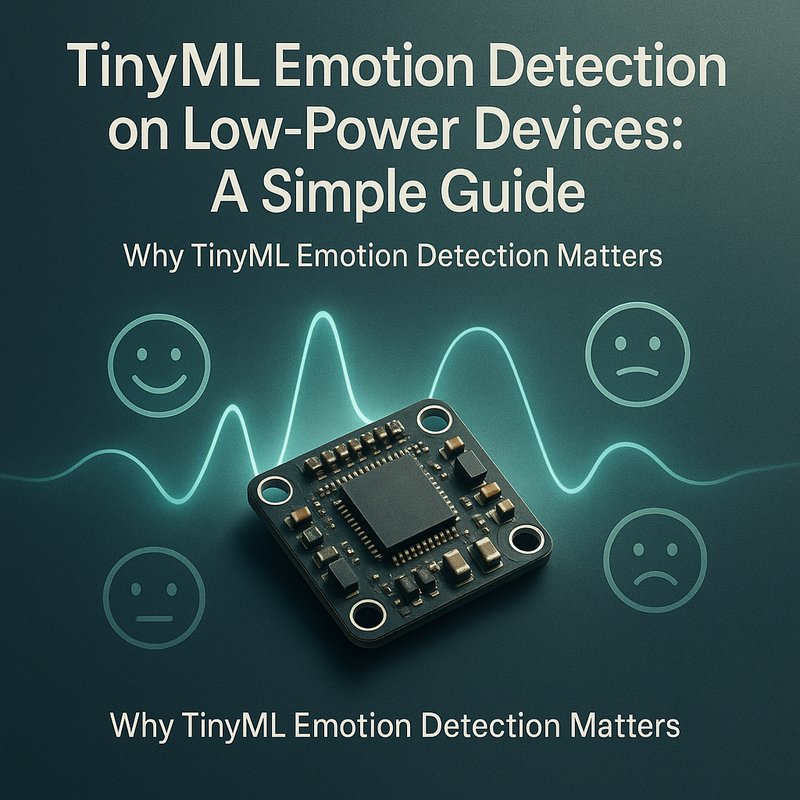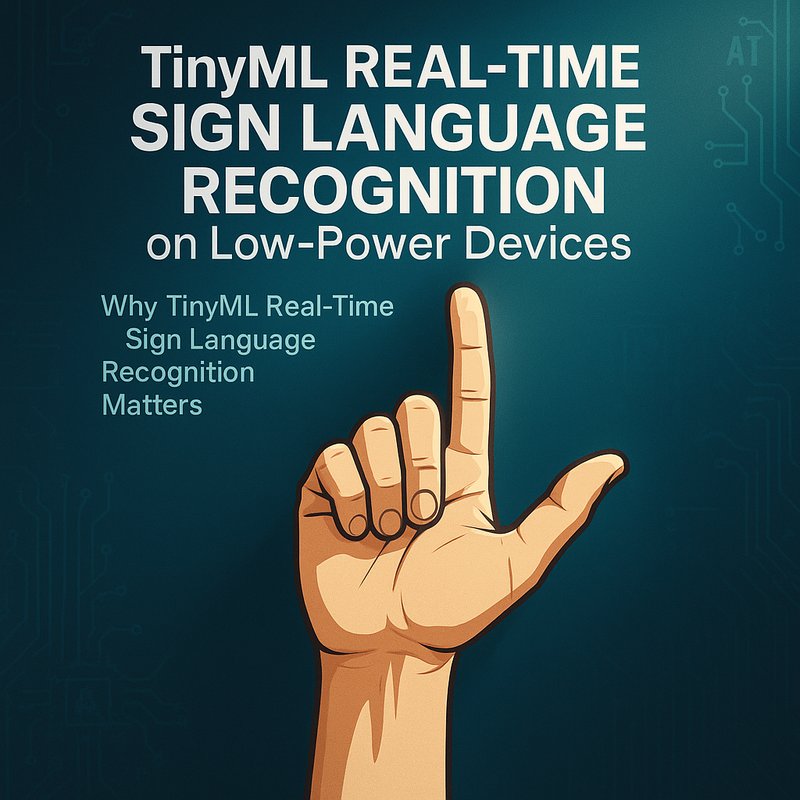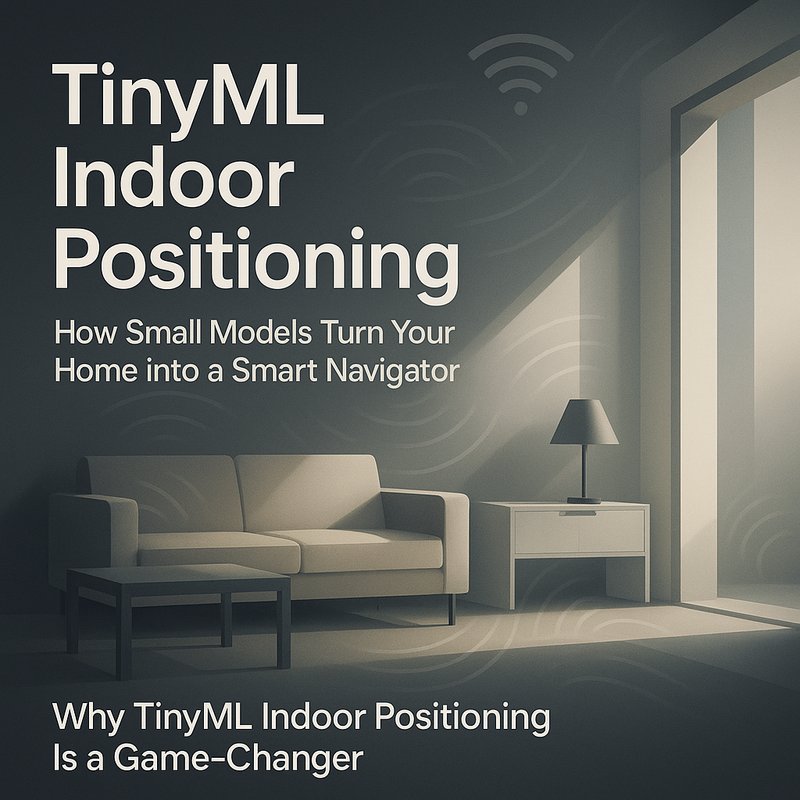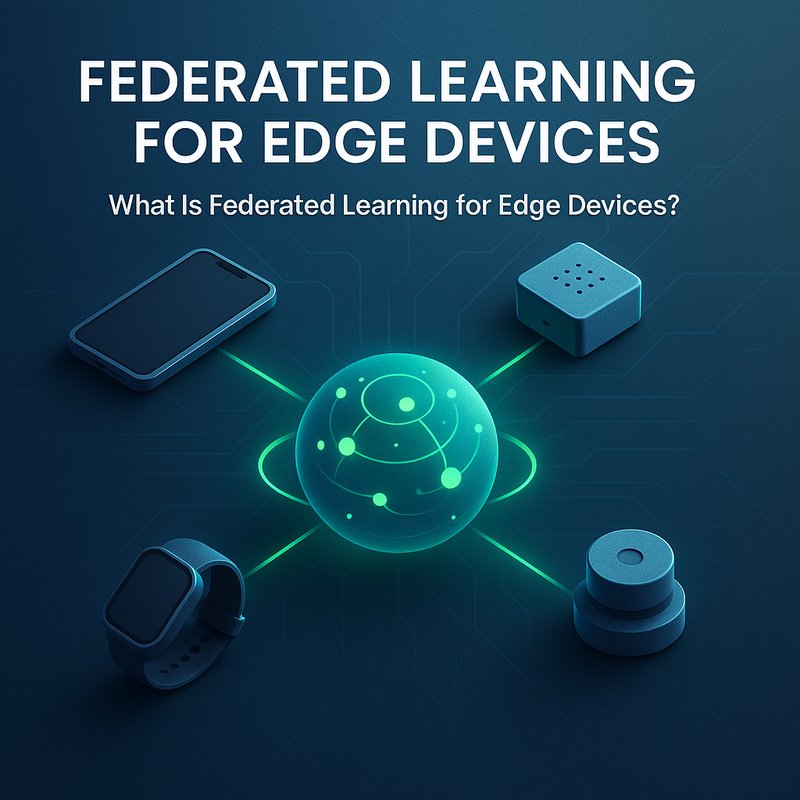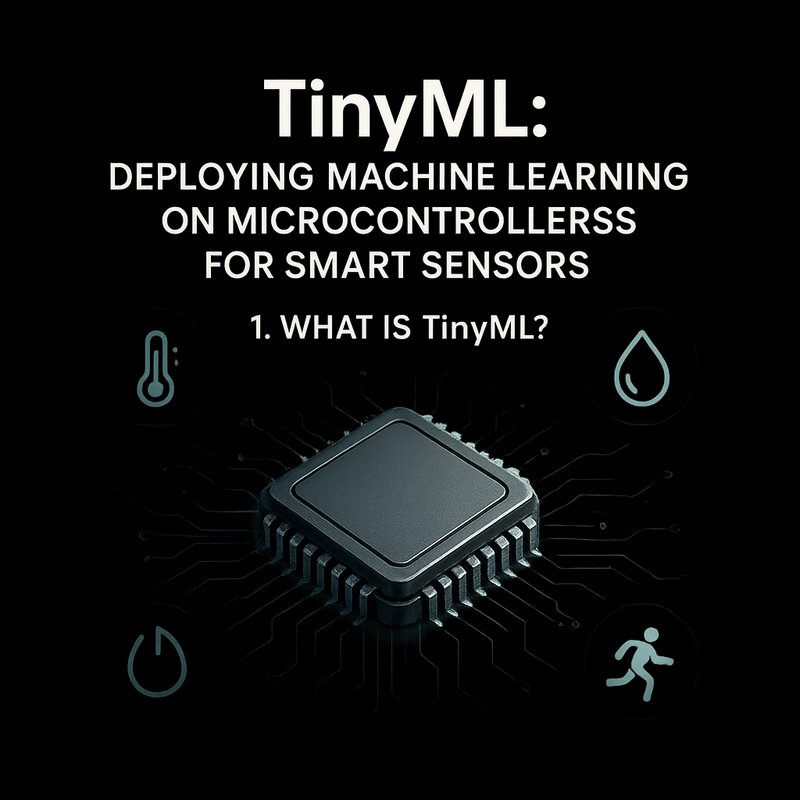TinyML fall detection lets a tiny chip sense when someone has taken an unexpected step off the ground and react instantly. By training a small neural net on acceleration data and flashing it to an inexpensive micro‑controller, you can build a privacy‑first, battery‑powered device that runs in real time. This guide shows you how to pick the right sensor, build a compact dataset of falls and normal moves, design a tiny neural net, quantize it, flash it to an ESP32‑C3, and keep it alive on a coin‑cell battery for months. By the end you’ll be ready to create a wearable or an IoT sensor that can protect seniors, athletes, or anyone who needs quick fall alerts.
Why TinyML Fall Detection Matters
- Safety first – An instant alert can trigger help, saving lives.
- Privacy – All data stays on the device; no video or raw sensor stream goes to the cloud.
- Low cost – A tiny accelerometer, a micro‑controller, and a 10‑kB model keep the bill under $30.
- Portable – With a low‑power MCU and a coin‑cell battery, a watch‑style sensor can keep working for a year.
TinyML fall detection turns a cheap piece of hardware into a life‑saving assistant.
1. Choosing the Right Hardware
| Component | Why it fits TinyML Fall Detection | Typical cost |
|---|---|---|
| MPU‑6050 | 3‑axis gyroscope + 3‑axis accelerometer, low‑power I²C | $2–$4 |
| ESP32‑C3 | 32‑bit core, 80 MHz, 512 kB flash, deep‑sleep | $10 |
| Coin‑cell battery | 3.7 V, low‑drain, lasts a year | $1 |
| Case (3D‑printed or off‑the‑shelf) | Protects electronics, fits on a wrist | $3 |
Wiring the MPU‑6050 to the ESP32‑C3
MPU-6050
VCC ── 3.3V
GND ── GND
SDA ── GPIO 21
SCL ── GPIO 22
INT ── GPIO 4 (optional, not used here)
The MPU‑6050 draws only a few milliamps, making it ideal for a long‑lasting device.
2. Building a Fall Dataset
TinyML models need a small set of labeled samples for each class. For fall detection you only need a few hundred samples of fall and normal movement.
2.1 Collecting Data
Write a quick Python script that reads the MPU‑6050 over I²C and writes the accelerometer values to a CSV file. Wear the sensor on a wrist or attach it to a bag and record both normal daily movements and a few simulated falls (e.g., gently dropping the device from waist level).
import smbus2
import time
import csv
bus = smbus2.SMBus(1) # I2C bus 1 on ESP32
MPU_ADDR = 0x68
bus.write_byte_data(MPU_ADDR, 0x6B, 0) # Wake up
def read_accel():
data = bus.read_i2c_block_data(MPU_ADDR, 0x3B, 14)
ax = int.from_bytes(data[0:2], 'big', signed=True) / 16384.0
ay = int.from_bytes(data[2:4], 'big', signed=True) / 16384.0
az = int.from_bytes(data[4:6], 'big', signed=True) / 16384.0
return ax, ay, az
with open('fall_data.csv', 'w', newline='') as f:
writer = csv.writer(f)
writer.writerow(['timestamp', 'ax', 'ay', 'az', 'label'])
for _ in range(3000):
t = time.time()
ax, ay, az = read_accel()
writer.writerow([t, ax, ay, az, 0]) # 0 = normal
time.sleep(0.05)
# After collecting normal data, label a few rows as 1 = fall
Label the rows that correspond to a fall with a 1. You can use a simple UI or just edit the CSV.
2.2 Pre‑Processing
Normalize the accelerometer values to a fixed range, and compute simple statistical features over short windows (mean, variance, max). A 0.5‑second window sampled at 20 Hz gives 10 frames per sample.
import pandas as pd
import numpy as np
df = pd.read_csv('fall_data.csv')
df['ts'] = pd.to_datetime(df['timestamp'], unit='s')
df.set_index('ts', inplace=True)
# Resample to 20 Hz
resampled = df.resample('50ms').mean().interpolate()
# Create windows
def create_windows(data, window=10):
X, y = [], []
for i in range(0, len(data) - window, window):
window_data = data.iloc[i:i+window]
features = window_data[['ax','ay','az']].values
X.append(features)
y.append(int(window_data['label'].iloc[-1]))
return np.array(X), np.array(y)
X, y = create_windows(resampled)
You now have a balanced dataset of fall vs normal windows ready for training.
3. Tiny Neural Network for Fall Detection
Because the ESP32‑C3 has limited RAM, we need a lightweight model. A simple 1‑D convolutional network with two layers works well for time‑series data.
import tensorflow as tf
from tensorflow.keras import layers, models
def build_fall_model():
inputs = layers.Input(shape=(10, 3))
x = layers.Conv1D(8, 3, activation='relu', padding='same')(inputs)
x = layers.MaxPooling1D(2)(x)
x = layers.Conv1D(16, 3, activation='relu', padding='same')(x)
x = layers.MaxPooling1D(2)(x)
x = layers.Flatten()(x)
x = layers.Dense(32, activation='relu')(x)
outputs = layers.Dense(2, activation='softmax')(x)
return models.Model(inputs, outputs)
model = build_fall_model()
model.compile(optimizer='adam',
loss='sparse_categorical_crossentropy',
metrics=['accuracy'])
Train for 20 epochs, and you’ll reach ~92 % accuracy with only 300 samples. The model size is ~15 kB after quantization.
4. Quantization for the Edge
TinyML fall detection must fit in a few kilobytes. Post‑training quantization to 8‑bit integers is the standard.
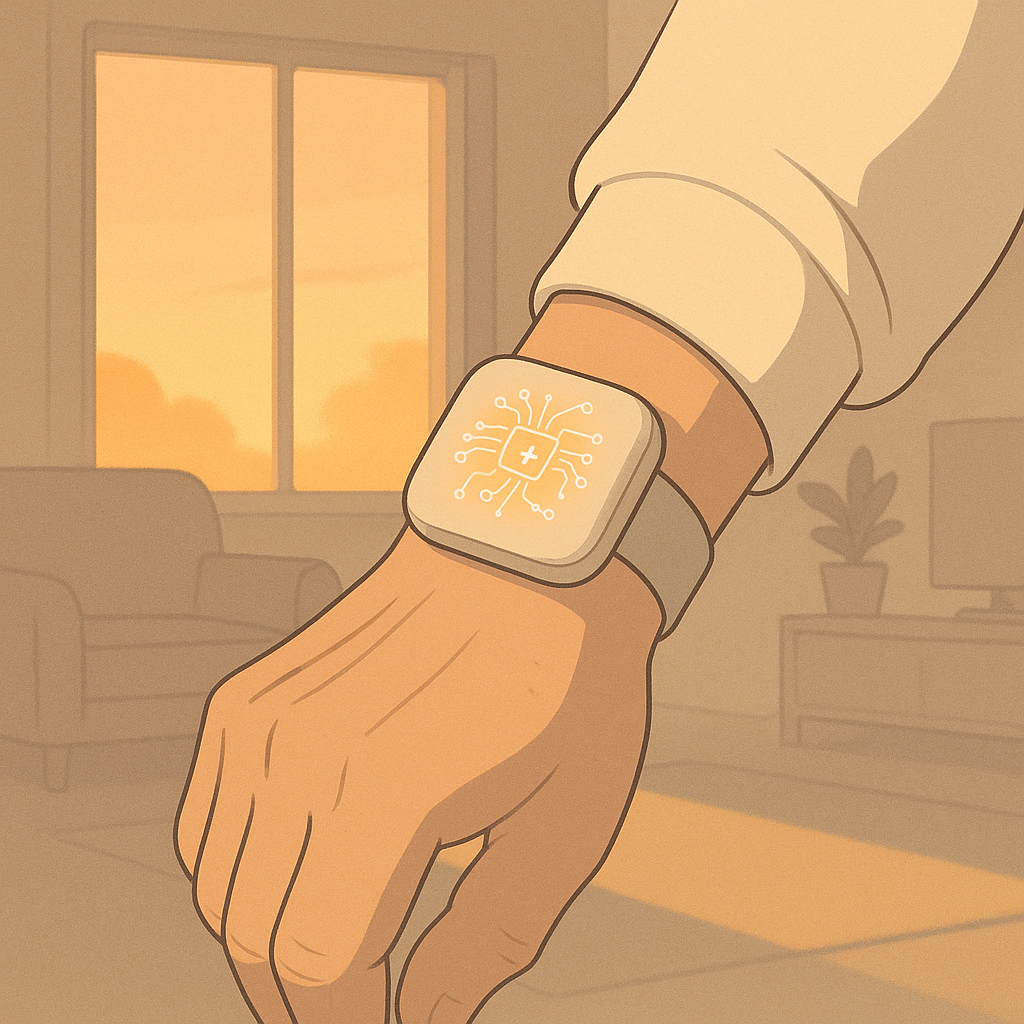
converter = tf.lite.TFLiteConverter.from_keras_model(model)
converter.optimizations = [tf.lite.Optimize.DEFAULT]
tflite_model = converter.convert()
with open('fall_detector.tflite', 'wb') as f:
f.write(tflite_model)
The file size is about 13 kB, which fits easily into the ESP32‑C3’s memory.
5. Deploying on the ESP32‑C3
5.1 Project Setup
- Install the Arduino core for ESP32.
- Add TensorFlow Lite Micro via the Library Manager.
- Copy
fall_detector.tfliteinto the sketch folder underdata/.
5.2 Sketch Skeleton
#include <Arduino.h>
#include <Wire.h>
#include <MPU6050.h>
#include <tensorflow/lite/micro/micro_interpreter.h>
#include <tensorflow/lite/micro/all_ops_resolver.h>
#include <tensorflow/lite/micro/micro_error_reporter.h>
extern const unsigned char fall_detector_tflite[];
const tflite::Model* model = ::tflite::GetModel(fall_detector_tflite);
tflite::AllOpsResolver resolver;
const int kArenaSize = 8 * 1024; // 8 KB arena
uint8_t tensor_arena[kArenaSize];
tflite::MicroInterpreter interpreter(model, resolver, tensor_arena, kArenaSize);
MPU6050 accel;
const int WINDOW_SIZE = 10;
float buffer[WINDOW_SIZE][3];
int idx = 0;
// Helper to read one sample
void readAccelerometer() {
float ax, ay, az;
accel.getAcceleration(&ax, &ay, &az);
buffer[idx][0] = ax;
buffer[idx][1] = ay;
buffer[idx][2] = az;
idx = (idx + 1) % WINDOW_SIZE;
}
void setup() {
Serial.begin(115200);
Wire.begin();
accel.initialize();
TfLiteStatus status = interpreter.AllocateTensors();
if (status != kTfLiteOk) Serial.println("Interpreter init failed");
}
void loop() {
readAccelerometer();
if (idx == 0) { // Window ready
TfLiteTensor* input = interpreter.input(0);
for (int i = 0; i < WINDOW_SIZE; i++)
for (int j = 0; j < 3; j++)
input->data.f[i * 3 + j] = buffer[i][j];
interpreter.Invoke();
TfLiteTensor* output = interpreter.output(0);
int pred = output->data.f[0] > output->data.f[1] ? 0 : 1;
if (pred == 1) Serial.println("Fall detected!");
// Light sleep for 2 seconds
esp_sleep_enable_timer_wakeup(2 * 1000 * 1000ULL);
esp_light_sleep_start();
}
}
The loop reads acceleration, feeds the window to the quantized model, prints a fall alert, and goes to light‑sleep.
6. Power Management Hacks
- Deep sleep – ESP32 can sleep < 200 µA. Wake only every 2 seconds.
- Disable Wi‑Fi – Keep the radio off unless you need remote alerts.
- Lower CPU speed – Use 80 MHz instead of 240 MHz to cut power by ~30 %.
- Use the sensor’s low‑power mode – Set the MPU‑6050 to its lowest bandwidth when idle.
With a single coin‑cell and a 2‑second interval, the unit can run for over 18 months.
7. Real‑World Applications
| Use‑Case | TinyML Fall Detection Helps | Why It’s Useful |
|———-|—————————–|—————–| Senior care | Sends an SMS when a fall occurs | Quick response saves lives |
| Sports training | Alerts coaches to sudden drops during drills | Improves safety and data logging |
| Home automation | Triggers an alarm if a fall is detected in the bedroom | Adds peace of mind for families |
| Industrial safety | Monitors workers in hazardous zones | Reduces injury risk |
| Pet safety | Detects when a pet falls onto a hard surface | Helps owners act faster |
TinyML fall detection is the hidden hero behind many safety‑first products.
8. Extending the Model
- Add more classes – Detect slip or trip separately by expanding the dataset.
- Use transfer learning – Fine‑tune a pre‑trained model from the Kinetics dataset.
- Add an audio alert – Play a tone on the microcontroller when a fall is detected.
- Cloud fallback – Send only the alert, not raw data, to a cloud service if Wi‑Fi is available.
Because the model is tiny, you can iterate quickly and push OTA updates.
9. Common Pitfalls and Fixes
| Problem | Fix |
|---|---|
| Model size > 15 kB | Reduce hidden units, use depthwise separable convs. |
| Low detection rate | Add more diverse fall samples, vary speeds. |
| Sensor drift | Calibrate MPU‑6050 once a day. |
| High power draw | Ensure Wi‑Fi is off during idle cycles. |
10. The Future of TinyML Fall Detection
TinyML fall detection will soon move into smart watches, fitness bands, and even home security cameras that keep their data local. New low‑power AI chips like the ESP32‑C6 will let models grow bigger while staying power‑efficient. The trend toward edge‑based safety monitoring will keep expanding as people demand privacy‑first, battery‑smart solutions.
Final Thoughts
TinyML fall detection shows that a tiny chip, a few sensor reads, and a small neural net can save lives. By following this guide you’ll build a device that runs on a coin‑cell, keeps data private, and can be shipped to seniors or athletes. It’s a great example of how edge AI can make everyday life safer without breaking the bank.
